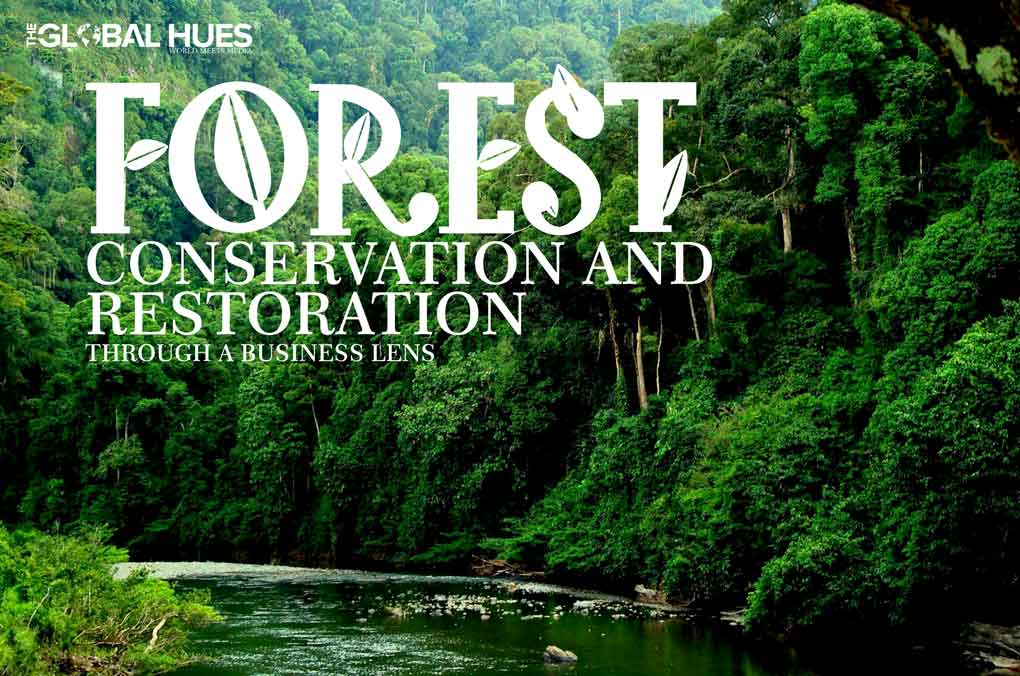Owing to interconnected crises of nature loss and climate change, investing in forest conservation and restoration can surely benefit businesses. Environmental, Social, and Governance (ESG) strategy is in talks right now as it can be an effective tool in protecting the environment. With the focus on ESG data by financial institutions and businesses, there could not have been a better tool to ensure forests and ecosystem conservation and restoration. But why forward-looking businesses and companies should come forward and invest in forest conservation and restoration? Let’s find out the answer to this bigger question through the insights presented by World Economic Forum.

According to World Economic Forum report, “Businesses are under increasing pressure from governments, consumers, and investors to avoid, reduce and mitigate their carbon emissions and reduce their impact on nature and biodiversity. Many businesses are directly vulnerable to the effects of nature loss and climate change. $44 trillion of economic value generation is dependent on nature and its services. Halting business practices that contribute to nature and forest loss and climate change is a vital priority.” It is becoming the need of the hour to conserve and restore forests to safeguard business interests and reverse the damage caused to the natural environment. We all know investing in forests will eventually protect and restore the essential biodiversity and ecosystem services that societies and economies depend on.
WEF further elaborated on this concept and explained that investing in forest conservation and restoration can create short-, medium- and long-term value for businesses in three ways:
- By boosting business resilience against risks;
- By creating growth and profitability opportunities; and
- By improving business positioning through values-based leadership
The report highlights that “The financial risks to businesses posed by climate change and the destruction of nature are severe, and investing in forest conservation and restoration is a cost-effective way to build resilience to these risks. The economic value of forests is vast – one estimate suggests that the total value of intact forests is up to $150 trillion, around double the value of global stock markets.” Therefore, it is very clear and obvious to say that forest conservation and restoration can offer opportunities for business growth and profitability.
Let’s take a closer look at all the three ways:
-
Business Resilience Opportunities
Under business resilience opportunities, the report mentions how forest conversation and restoration can lead to the following:
1.1 Reduced Supply Risks
According to the report, “Investing in forest conservation and restoration can protect business operations and value chains against the loss of natural capital and physical effects of climate change. The future success of many businesses is also dependent on the continued supply of forest products or ecosystem services.” If businesses invest in forests it can be fruitful to them as forest act as as a vast carbon sink and offer protection from the physical impacts of climate change. To cite an example, mangrove forests are estimated to reduce property damage by more than $65 billion every year by blocking storm surges and reducing the intensity of waves.
1.2 Reduced Demand Risks
Nowadays, consumers have started prioritizing sustainability in their purchasing decisions, with 79% of consumers across Europe, the US, and India changing their preferences towards a particular product based on social responsibility and environmental impact. This is high time for businesses to embrace this opportunity by investing in forests conversation. To cite an example, tentree, a sustainable apparel brand, has committed to growing 10 trees for every item that it sells, accounting for these costs in the product pricing.
1.3 Reduced regulatory risks
Governments of different countries are setting agendas for action on nature loss and forest restoration, with countries negotiating the adoption of the post-2020 Global Biodiversity Framework. Infact, some countries have already passed legislation to protect and conserve natural ecosystems, in line with a global target to protect 30% of the planet by the year 2030. For instance, France has already established a duty-of-care law that requires businesses to include environmental assessments in their value chains.
1.4 Reduced capital risks
Investment in forest conversation can also prove beneficial for businesses as it can help them to stay ahead of shifting investment policies and ensure continued access to capital. Fortunately, more than 540 investors, representing over $52 trillion in assets across dozens of markets, have signed up to Climate Action 100+, an investorled initiative to engage high-emission businesses. For example, the report mentions, ASN Bank has committed to having a net positive effect on biodiversity by 2030 through its loans and investments.
-
Business Profitability and growth opportunities
Businesses can indirectly earn more business profits by strengthening their sustainability strategies through forest conservation.
2.1 Increased Profitability
Profits are undoubtedly one of the most important aspects of any business. Investing in forest conversation can surprisingly lead to increased profitability through lower costs of capital and equity and increased customer loyalty driven by sustainability. For instance, the report mentions “Research by Bank of America found that businesses with a better environmental social governance (ESG) record produced higher three-year returns, were more likely to become high-quality stocks, were less likely to have large price declines and were less likely to go bankrupt”.
2.2 Increased Growth
Growth is another significant aspect to discuss. Businesses can definitely capture new market opportunities if they expand their product ranges to include sustainably sourced forest products. For example, sustainable forest management for timber, pulp and paper products could create $165 billion in additional annual revenue by 2030.
-
Values Based leadership opportunities
Forest conversation can support businesses and companies to become industry leaders in sustainability and consolidate relationships with customers, employees, and their partners.
3.1 Increased customer trust
Customer trust is vital for the success of any business. Investing in forests can help tap on that too. WEF report mentions that “By investing in forest conservation and restoration, businesses can build customer trust and engage customers to act more sustainably. For example, the Priceless Planet Coalition, launched by Mastercard and other founding partners, has pledged to grow trees when customers make financial transactions with selected partners, such as for public transport and when using their Mastercard for travel, goods, and services.”
3.2 Improved talent attraction and retention
Another valuable advantage is improved talent attraction. As millennials and Gen Z have started prioritizing a business’s sustainability commitments when deciding where to work, investing in forests can support businesses to gain a hiring advantage. For example, HP recently partnered with the Arbor Day Foundation to grow a tree for each of HP’s 55,000 employees, as part of its target to grow 1 million trees by the end of 2020.
3.3 Improved relationship with business and ecosystem partners
What’s better than an investment that helps a business in building stronger relationships with their business and ecosystem partners, including the communities where they operate. Forest conversation and restoration activities can surely help businesses transform their relationships with leading partners beyond any financial transaction. The report mentions an example: Nestlé has worked in partnership with its cocoa suppliers to protect and restore the Cavally forest reserve in Côte d’Ivoire and enhance the resilience of local communities.
SOURCE: The information in the article has been noted from The World Economic Forum Report 2021 prepared in collaboration with Dalberg.



